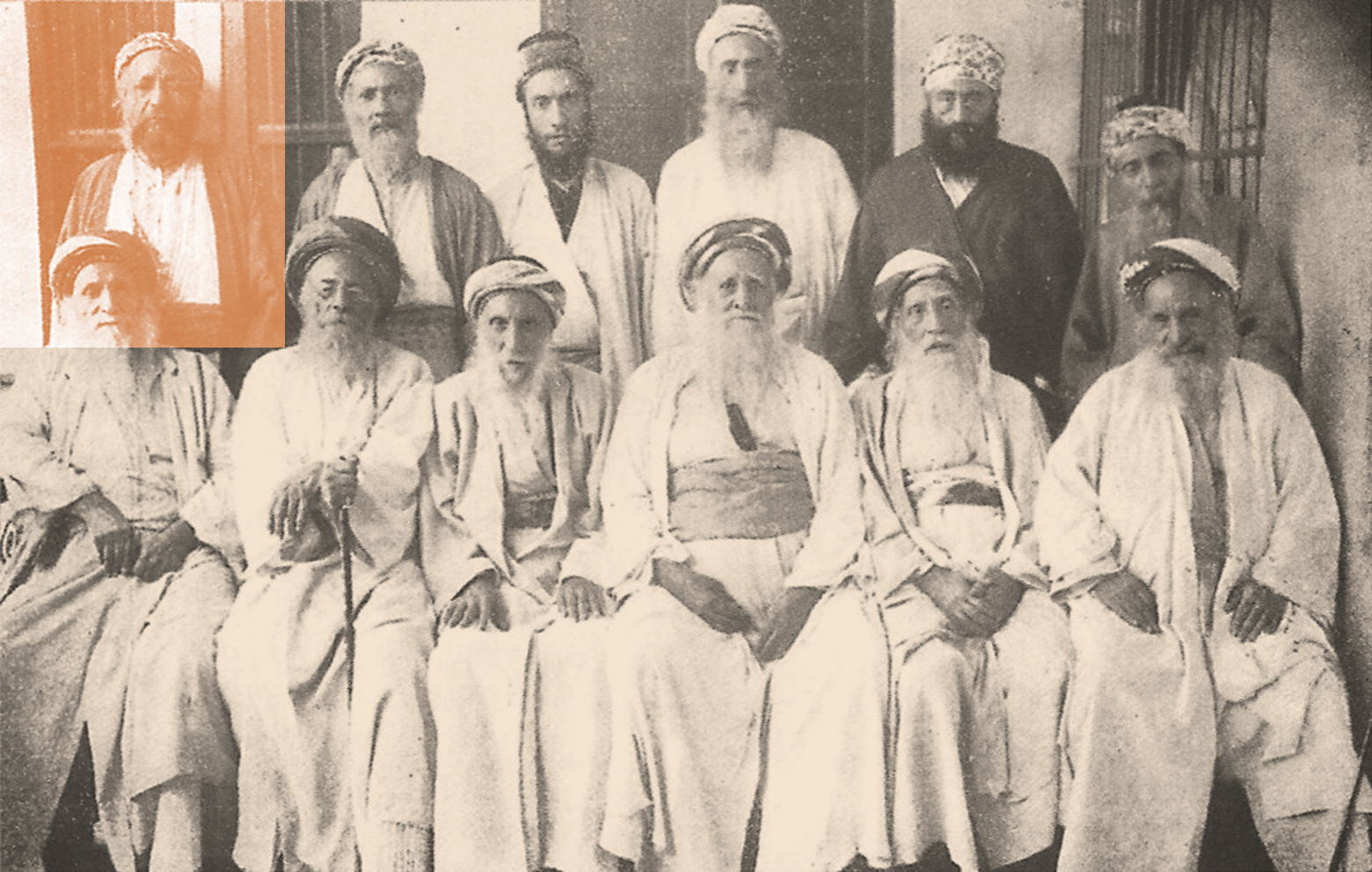
Humble Yet Distinguished Beginnings
Living in Baghdad, Iraq in the early 1900s, Hakham Yehezqel Ya’aqob Moshe Mouallem a”h, had raised his sons, the learned Hakham Meir Mouallem a”h and his brother Hakham Hayyim Shalom Mouallem a”h (pictured to the right in the highlighted inset on the left, remembrance 9 Nissan (2024 marks the 100-yr. anniversary)), along with their sister Simhah Mouallem a”h, to follow in the footsteps of their forefathers pursuing advanced scholarship and endeavour, joining the vast population of Iraqi Jews excelling in society in the Middle East at the beginning of the 20th century. Both Hakham Hayyim Shalom and Simhah were childless.
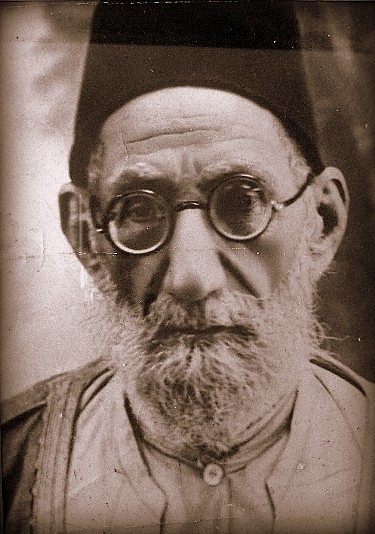
A Regal Lineage of Tradition & Ethics

The Mouallem sons continued their noble family heritage of distinguished Torah scholars and scribes. Hakham Hayyim Shalom, a leader in the community, was a Rabbi who gave lectures on ethics sprinkled with engaging and humorous parables, attracting large audiences, and the treasurer (gizbar) in charge of salary disbursement at the prestigious Talmudic academy of Midrash Beth Zilkhah, founded by Hakham Abdullah Somekh zsq”l – the father-in-law of il Hakham Yosef Hayyim zsq”l, known as the famed Ben Ish Hai, who even today inspires many observant Jews with his erudition on Halakhic rulings, Biblical exegesis, Talmudic interpretations, and Qabbalistic insights.
Meanwhile, Hakham Meir (pictured to the left) served as a member and Torah scribe for the Rabbinical Courts in Baghdad (a Sofer in the Beth Din, drafting Kethubboth and Gittin, and serving the Jewish community). He helped preserve the framework of the long-standing traditions of the Iraqi Jewish heritage, and instilled ethical and moral values in the Mouallem family. Hakham Meir perpetuated his lineage as the father of five sons: Hagouli, Shaul, Khedhouri, Rouben, and Salim. Pictured on the right is Hakham Meir seated with his wife, Khatoun a”h, and his youngest son Salim Mouallem a”h (pictured standing are members of the Haqaq family).
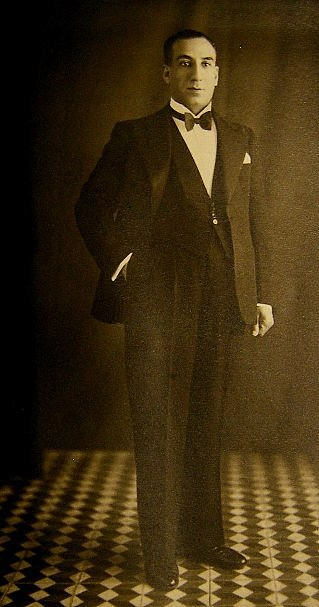 Outstanding Achievement in the Business World
Outstanding Achievement in the Business World
Rouben Meir Mouallem a”h (remembrance 10 Nissan), the son of Hakham Meir, chose a different path in life than just Torah study, deciding to pursue a business career. In a short time, Rouben amassed a sizable wealth, and expanded his trade-business activities into Iran, where import/export with Iraq was in need of development. Starting in Hamadan, and later moving to Tehran, Rouben’s enterprise grew to earn him the distinguished honor of being one of the wealthiest men in Iran in his time, sharing the distinction with the Shah of owning the most coveted vehicle of his day, chauffeured as well. Known far and wide as an exceptionally generous man, Rouben always had an affinity in his heart to help someone in need. After moving to the U.S., Rouben later went on to form a real-estate development company in Long Island, New York, with one of his sons, Aboud (affectionately referred to as Aboudi a”h), which continues to operate to this day.
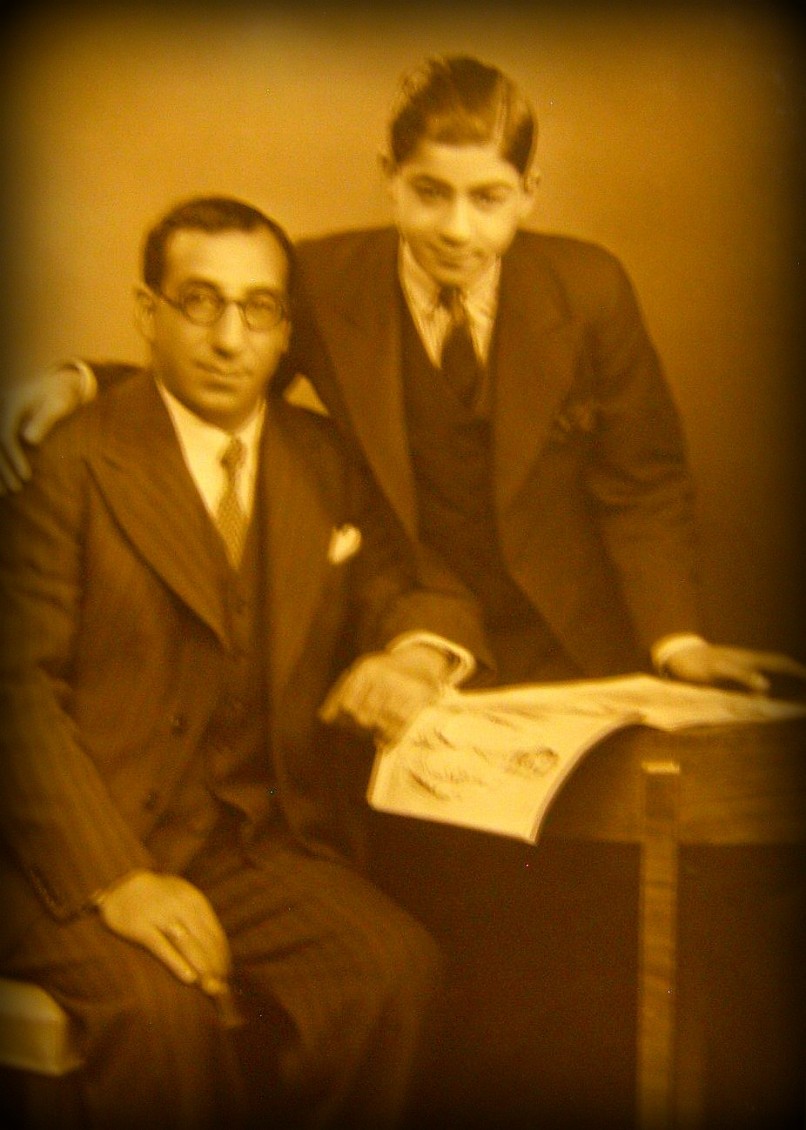 Superb Accomplishment in Academics
Superb Accomplishment in Academics
Rouben sent Aboudi from Iran to live with his uncle, Khedhouri, in the Isle of Wight, while he attended the prestigious Brighton College, an elite boys’ preparatory school in the U.K. In response to the xenophobic atmosphere of the time, Aboudi later decided to change his name to A. Robin Mowlem (adopting his father’s name in the process) to better integrate into Western society.
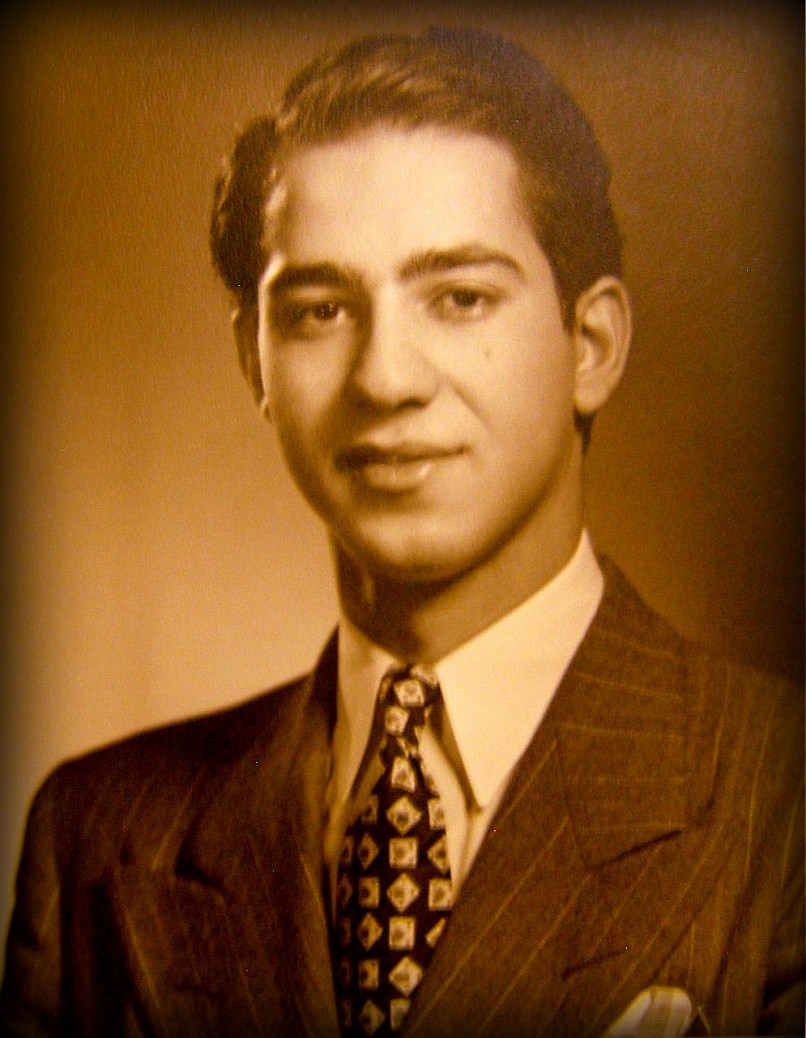
Relocating to the U.S., Aboudi went on to receive a B.A. from Columbia College and a B.S. in Mechanical Engineering from Columbia University, impressively earning both degrees in the same year with the distinction of Magna Cum Laude. Aboudi then continued his engineering studies at the Massachusetts Institute of Technology (MIT), authoring his master’s thesis, entitled, “Design of Factory Power Plant” in fulfillment of his M.S. in Mechanical Engineering. He then returned to Columbia to pursue business and economics, attaining an M.B.A. degree by penning his thesis entitled, “Iraq’s Foreign Trade and the Domestic Economy,” before starting his professional career at IBM Corporation.
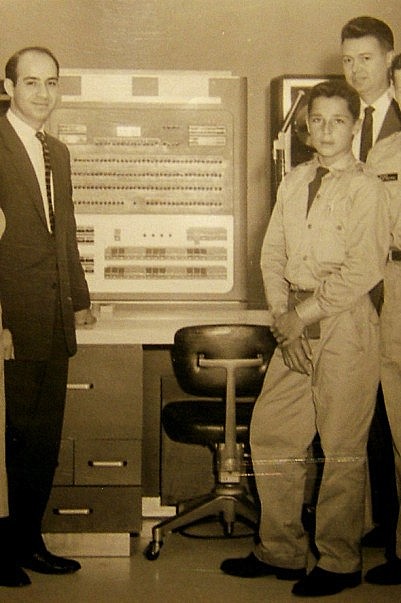 A Vanguard for a Monumental Technical Feat
A Vanguard for a Monumental Technical Feat
At IBM, Aboudi (now known professionally as A. Robin) spearheaded the famous Vanguard Computing Center, a crucial component in the national Vanguard space project. As the Manager of Vanguard Operations and Director of Computer Programming for the mission, Robin issued the seminal IBM information press release, “How the Computer Calculates Orbits,” and the technical paper entitled, “Determining a Satellite’s Attitude,” published in the scientific journal, Space/Aeronautics.
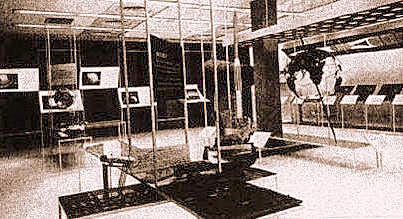 The Vanguard Computing Center was largely concerned with problems involved in processing positional information obtained from a satellite’s continuous radio transmission. The center was owned, staffed, and operated by IBM Corporation under a contract with the U.S. Navy. Robin served as the scientific liaison between the US Navy and IBM, deducing valuable information about the nature of the Earth and the ionosphere by tracking orbits utilizing the IBM 704 computer.
The Vanguard Computing Center was largely concerned with problems involved in processing positional information obtained from a satellite’s continuous radio transmission. The center was owned, staffed, and operated by IBM Corporation under a contract with the U.S. Navy. Robin served as the scientific liaison between the US Navy and IBM, deducing valuable information about the nature of the Earth and the ionosphere by tracking orbits utilizing the IBM 704 computer.
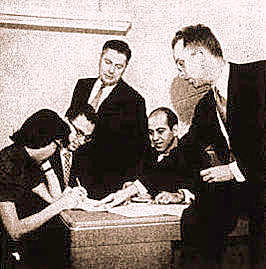 Mission Critical – that is the expression that describes a project of this scale and magnitude of importance, and the challenge that was placed before Robin. To perform lightning calculations during the International Geophysical Year (IGY – July 1, 1957, to December 31, 1958) which would be required in the tracking of any artificial Earth satellites launched, an IBM Type 704 Electronic Data-Processing Machine was installed at the Vanguard Computing Center.
Mission Critical – that is the expression that describes a project of this scale and magnitude of importance, and the challenge that was placed before Robin. To perform lightning calculations during the International Geophysical Year (IGY – July 1, 1957, to December 31, 1958) which would be required in the tracking of any artificial Earth satellites launched, an IBM Type 704 Electronic Data-Processing Machine was installed at the Vanguard Computing Center.
 The details of the Vanguard mission are chronicled in numerous issues of IBM’s research journal, Business Machines. To appreciate the state of the art at that time, the IBM 704 had 147,456 doughnut-shaped magnetic memory cores woven along a complex screen of wires so that electrical impulses could alter their electronic state. In such a configuration, a line of cores represented a figure or word – similar to the dots and dashes used in Morse code.
The details of the Vanguard mission are chronicled in numerous issues of IBM’s research journal, Business Machines. To appreciate the state of the art at that time, the IBM 704 had 147,456 doughnut-shaped magnetic memory cores woven along a complex screen of wires so that electrical impulses could alter their electronic state. In such a configuration, a line of cores represented a figure or word – similar to the dots and dashes used in Morse code.
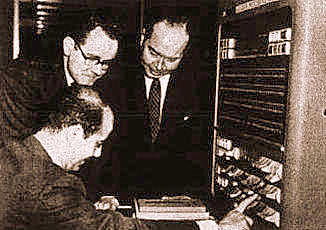 Leading up to the historic launch of the Russian satellite – Sputnik (meaning “fellow traveler”), Robin’s team at Vanguard worked feverishly to complete the American satellite program, painstakingly programming the IBM 704 to translate the orbital formulas into machine language. After 154 hours of continuous operation, the 704 had performed over six billion calculations, enabling it to determine Sputnik’s orbiting height, its period to complete a full Earth orbit, and its projected path during Sputnik’s entire mission.
Leading up to the historic launch of the Russian satellite – Sputnik (meaning “fellow traveler”), Robin’s team at Vanguard worked feverishly to complete the American satellite program, painstakingly programming the IBM 704 to translate the orbital formulas into machine language. After 154 hours of continuous operation, the 704 had performed over six billion calculations, enabling it to determine Sputnik’s orbiting height, its period to complete a full Earth orbit, and its projected path during Sputnik’s entire mission.
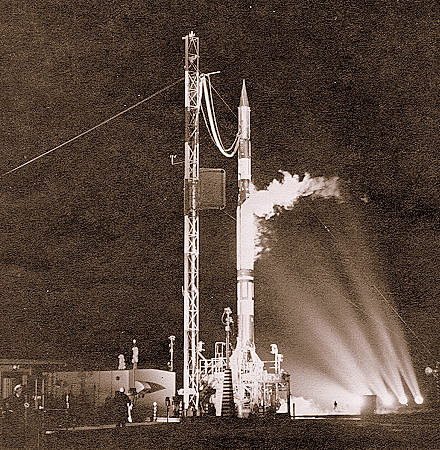 The Vanguard rocket was a three-stage launching vehicle built to carry a 21.5 pound satellite into its orbit 300 miles above the Earth. Standing 72 feet tall and weighing 11 tons, the Vanguard rocket was equipped to launch the satellite at a final speed of 18,000 mph (or 5 miles per second). Just the first-stage engine alone produced over 27,000 pounds of thrust, enabling it to accelerate to a speed of 4,000 mph in about 140 seconds. Retro rockets were used to separate the expended second stage from the third stage, while spin rockets were used to spin the third stage like a football, providing greater directional stability.
The Vanguard rocket was a three-stage launching vehicle built to carry a 21.5 pound satellite into its orbit 300 miles above the Earth. Standing 72 feet tall and weighing 11 tons, the Vanguard rocket was equipped to launch the satellite at a final speed of 18,000 mph (or 5 miles per second). Just the first-stage engine alone produced over 27,000 pounds of thrust, enabling it to accelerate to a speed of 4,000 mph in about 140 seconds. Retro rockets were used to separate the expended second stage from the third stage, while spin rockets were used to spin the third stage like a football, providing greater directional stability.
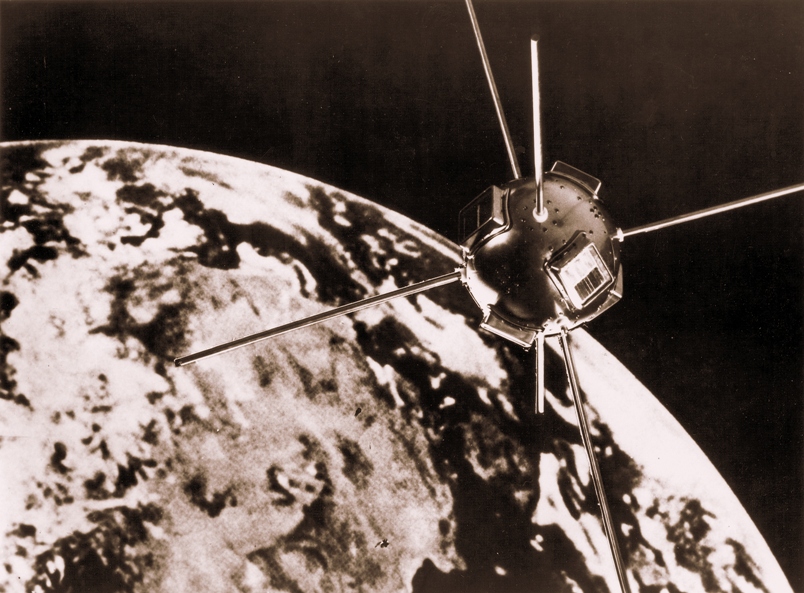 The separation mechanism consisted of a large coiled spring, triggered by a timer. The program timer contained a specially-coded steel tape having the complete flight instructions for the launching vehicle. A coasting-time computer (which actually was a compact electronic calculator) sensed the correct time to fire the third and final rocket stage. A gyro-reference system was used to detect errors in the flight of the rocket, sending corrective signals to guide the various stages into proper orbit. The magnetic amplifier autopilot obtained pitch-, yaw-, and roll-axis displacement signals from the gyro-reference system, directing hydraulic actuators which in turn displaced the rocket motor and its thrust line for pitch and yaw control.
The separation mechanism consisted of a large coiled spring, triggered by a timer. The program timer contained a specially-coded steel tape having the complete flight instructions for the launching vehicle. A coasting-time computer (which actually was a compact electronic calculator) sensed the correct time to fire the third and final rocket stage. A gyro-reference system was used to detect errors in the flight of the rocket, sending corrective signals to guide the various stages into proper orbit. The magnetic amplifier autopilot obtained pitch-, yaw-, and roll-axis displacement signals from the gyro-reference system, directing hydraulic actuators which in turn displaced the rocket motor and its thrust line for pitch and yaw control.
 The artificial Earth satellite was initially a three-pound, grapefruit-sized apparatus containing scientific instrumentation for measuring phenomena above the Earth’s atmosphere. The shell of the satellite had a magnesium alloy “skin” that was 0.028 inches thick before being plated with gold, chromium, silicon monoxide, aluminum, and an additional coating of silicon monoxide. Minitrack radio-tracking equipment picked up signals from the satellite’s tiny sub-miniature transmitter to indicate its position using antennas covering an area of 500-1,000 feet. The data was then relayed and screened before using it to determine and predict the satellite’s orbits. Twelve Baker-Nunn-Schmidt telescope cameras were employed on the ground as optical tracking systems to photograph the satellite against the background of stars whose positions were known.
The artificial Earth satellite was initially a three-pound, grapefruit-sized apparatus containing scientific instrumentation for measuring phenomena above the Earth’s atmosphere. The shell of the satellite had a magnesium alloy “skin” that was 0.028 inches thick before being plated with gold, chromium, silicon monoxide, aluminum, and an additional coating of silicon monoxide. Minitrack radio-tracking equipment picked up signals from the satellite’s tiny sub-miniature transmitter to indicate its position using antennas covering an area of 500-1,000 feet. The data was then relayed and screened before using it to determine and predict the satellite’s orbits. Twelve Baker-Nunn-Schmidt telescope cameras were employed on the ground as optical tracking systems to photograph the satellite against the background of stars whose positions were known.
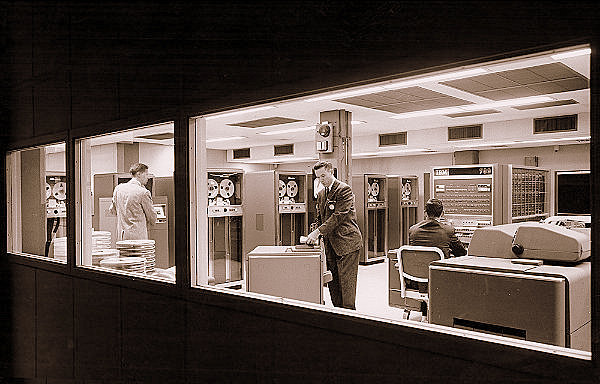 The Minitrack stations reported sightings to the Vanguard Center. With these, the IBM 704 continuously refined its preliminary orbit prediction. Eventually, usually between seven and nine hours after launching, the 704 was able to issue a definitive calculation, showing the shape of the orbit and the speed, position, and altitude of the satellite for every minute throughout the following week or ten days. Simultaneously, the 704 determined the geographical locations from which the observers of the Smithsonian Astrophysical Observatory and the Project Moonwatch participants could make visual observations of the satellite.
The Minitrack stations reported sightings to the Vanguard Center. With these, the IBM 704 continuously refined its preliminary orbit prediction. Eventually, usually between seven and nine hours after launching, the 704 was able to issue a definitive calculation, showing the shape of the orbit and the speed, position, and altitude of the satellite for every minute throughout the following week or ten days. Simultaneously, the 704 determined the geographical locations from which the observers of the Smithsonian Astrophysical Observatory and the Project Moonwatch participants could make visual observations of the satellite.
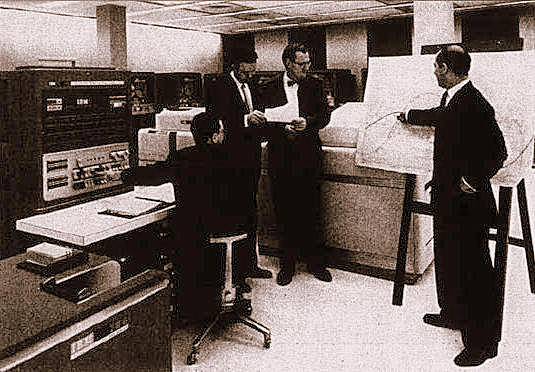 Robin built on IBM’s achievements with the Vanguard II, which was the world’s first space weather station. A radar-fed IBM 709 at Cape Canaveral provided orbital data on Vanguard II to the IBM 704 before the last-stage rocket fired, and took over control.
Robin built on IBM’s achievements with the Vanguard II, which was the world’s first space weather station. A radar-fed IBM 709 at Cape Canaveral provided orbital data on Vanguard II to the IBM 704 before the last-stage rocket fired, and took over control.
 This was followed with the development of the program for Project TIROS I, a weather observation satellite that completed an orbit of the Earth every 99 minutes. Robin’s role was critical. Vital to the project was determining the direction the vehicle was pointing in relation to the Earth in order to photograph cloud formation.
This was followed with the development of the program for Project TIROS I, a weather observation satellite that completed an orbit of the Earth every 99 minutes. Robin’s role was critical. Vital to the project was determining the direction the vehicle was pointing in relation to the Earth in order to photograph cloud formation.
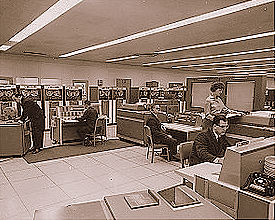 The Space/Aeronautics paper that Robin authored details the implementation of a system of IBM 7090 programs developed to help predict and determine, using data from IR sensors, the spin-axis orientation of the TIROS satellite. He further described how the program system could be applied equally well to other satellites that use IR scanners, that spin on an axis that is essentially fixed in inertial space during orbit, and that can be controlled by torques induced from magnetic coils around the base of the satellite.
The Space/Aeronautics paper that Robin authored details the implementation of a system of IBM 7090 programs developed to help predict and determine, using data from IR sensors, the spin-axis orientation of the TIROS satellite. He further described how the program system could be applied equally well to other satellites that use IR scanners, that spin on an axis that is essentially fixed in inertial space during orbit, and that can be controlled by torques induced from magnetic coils around the base of the satellite.
 Robin’s next effort was in leading Project ECHO, which involved a ten-story aluminum-coated plastic sphere, the skin of which was half as thin as the cellophane on a package of cigarettes, circling the Earth at close to 16,000 mph in an orbit nearly 1,000 miles high. ECHO was used to send radio signals from coast to coast by bouncing them off the orbiting vehicle. Successful cross-country communication was followed by telephone and telephoto communication via the space satellite. ECHO tapped into three IBM 709 computer systems to perform the complex set of tasks.
Robin’s next effort was in leading Project ECHO, which involved a ten-story aluminum-coated plastic sphere, the skin of which was half as thin as the cellophane on a package of cigarettes, circling the Earth at close to 16,000 mph in an orbit nearly 1,000 miles high. ECHO was used to send radio signals from coast to coast by bouncing them off the orbiting vehicle. Successful cross-country communication was followed by telephone and telephoto communication via the space satellite. ECHO tapped into three IBM 709 computer systems to perform the complex set of tasks.
 The Illustrious Crown of a Shining Success
The Illustrious Crown of a Shining Success
Robin went on to acquire his Ph.D. from the Catholic University of America in Fluid Mechanics and Heat Transfer. Dr. Mowlem’s thesis, later published in part in the Journal of the American Institute of Aeronautics and Astronautics (AIAA), entitled, “Analysis of Compressible Three-Dimensional Turbulent Flow over a Yawed Cone,” served him well in his critical contribution to IBM in NASA’s ultimate achievement of the Apollo Space Mission – making him the epitome of the euphemism, “rocket scientist.”
* Le’Illoui Nishmath Avi weMori Aboud ben Rouben ben Hakham Meir ben Hakham Yehezqel Ya’aqob Moshe Mouallem (remembrance 14 Tashri)
לעילוי נשמת אבי ומורי עבוד בן ראובן בן חכם מאיר בן חכם יחזקאל יעקב משה (י”ד תשרי)
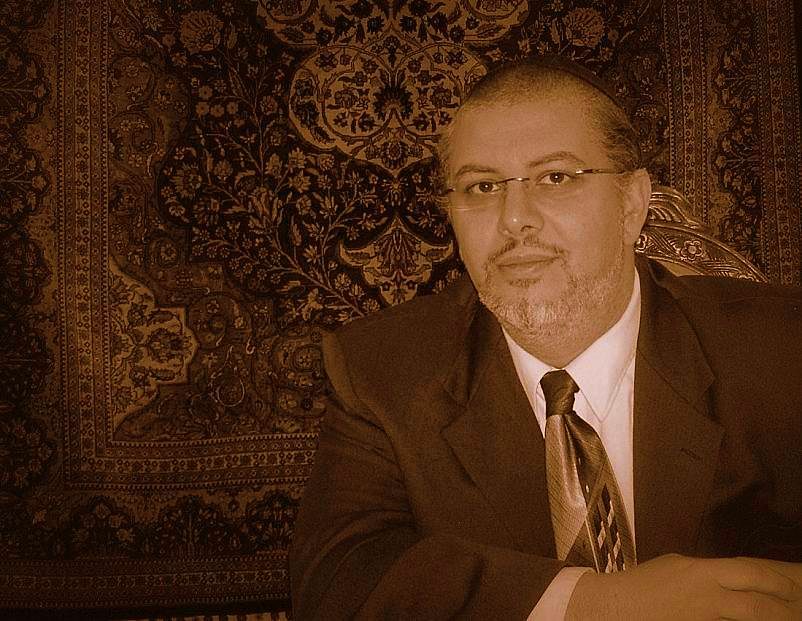 The Synergy of Vast Expertise & Rich Heritage
The Synergy of Vast Expertise & Rich Heritage
This Mouallem legacy of excellence has been passed down to the next generation. Inculcated in Robin’s son, Reuven Khedhouri Mouallem (who reverted to the original family name), is the same drive to aspire for greatness in scholarship and all life’s endeavors, motivating him to become a Torah scribe in the merit of his great-grandfather Hakham Meir a”h, as well as an accomplished musician. While founding FlashPoint IP, Dr. Mouallem also established an Iraqi synagogue (“Slah”) in Israel – Reyah Tov miBaghdad (A Fine Fragrance from Baghdad) – coming full circle to preserve the traditions and legacy of his forefathers, shortly after moving his family to Israel. Reuven and his wife Dalia (who grew up with a rich Persian background) know the importance of heritage and traditional values, and strive to incorporate this ethic into their legal and consultancy practice at FPIP.
________________________________
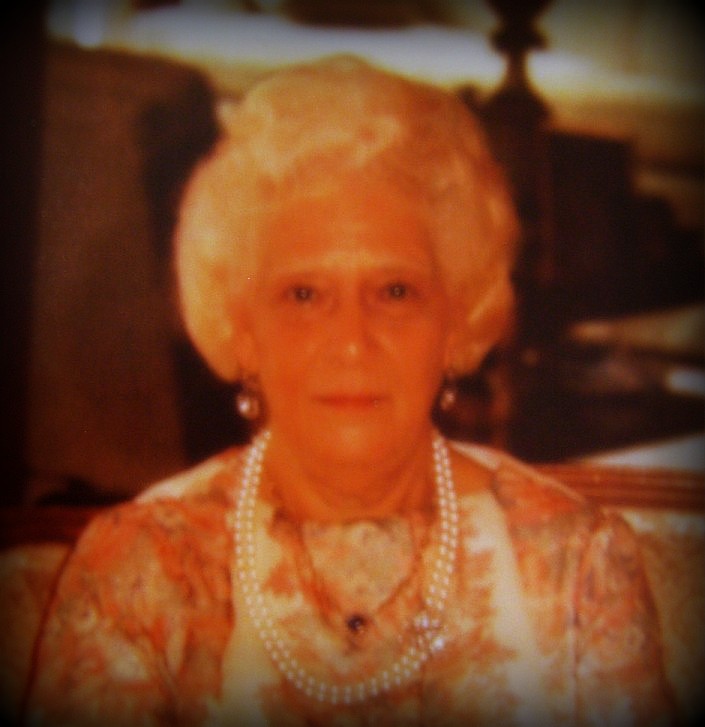 This website is also dedicated to the memory of my dear grandmother Massouda Peress a”h (née Moussafi) who passed away on the 26th of the Hebrew month of Siwan 5756 – the wife of the late, beloved Elias Eliyahu Peress a”h (remembrance 6 Tammuz). Nana, as we called her, fondly nourished me with her words of both compassion and rebuke, her amazing stories from a precious era, as well as her sumptuous cooking which seemed to carry the aroma of delicacies from time immemorable. Nana always taught me to keep sight of where I came from, as well as where I’m going, and for this, I will always love her dearly. – RKM, Siwan 5772
This website is also dedicated to the memory of my dear grandmother Massouda Peress a”h (née Moussafi) who passed away on the 26th of the Hebrew month of Siwan 5756 – the wife of the late, beloved Elias Eliyahu Peress a”h (remembrance 6 Tammuz). Nana, as we called her, fondly nourished me with her words of both compassion and rebuke, her amazing stories from a precious era, as well as her sumptuous cooking which seemed to carry the aroma of delicacies from time immemorable. Nana always taught me to keep sight of where I came from, as well as where I’m going, and for this, I will always love her dearly. – RKM, Siwan 5772
* Le’Illoui Nishmath Savathi weMorathi Massouda bath Farhah
לעילוי נשמת סבתי ומורתי מסעודה בת פ’רחה (כ”ו שיוון)


